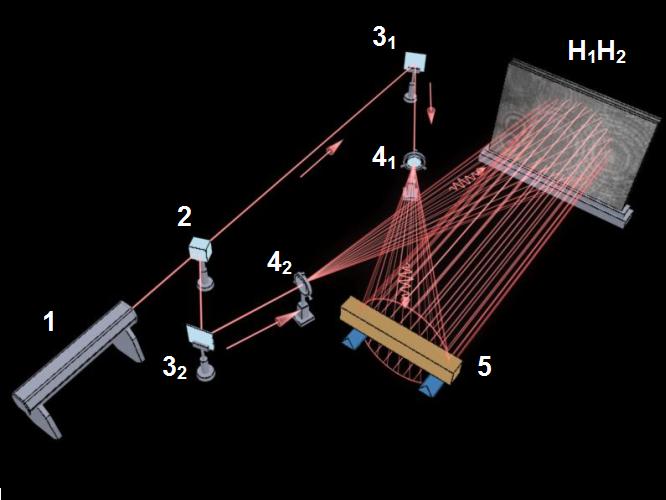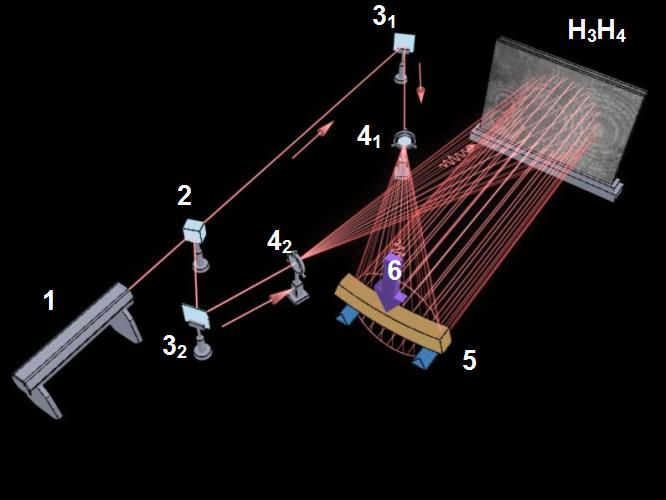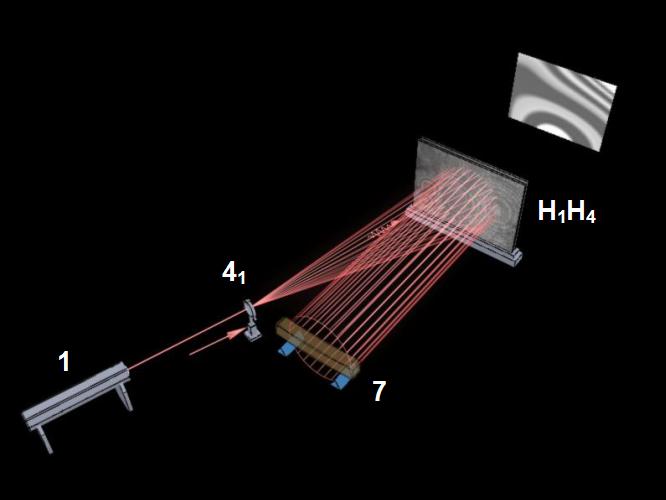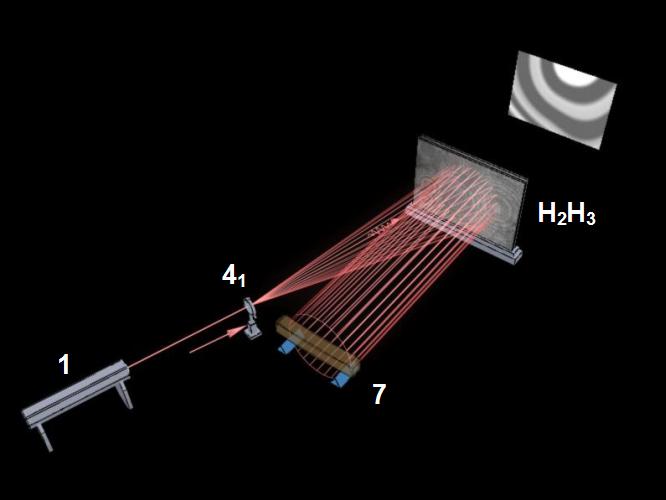Sandwich Method
3.1.2.4 Sandwich Method
The hologram recording method that combines the advantages of both the double-exposure and the real-time recordings and softens their disadvantages was elaborated by Abbramson (Abbramson, 1974), (Jones, Wykes, 1989). The basic idea consists in recording of two individual holograms for two different stages of the object. Both holograms are reconstructed at the same time. Unlike the double-exposure method, here it is possible to change mutual position of the records of the reconstructed wavefronts during the reconstruction process, because each of them regenerates independently. The relative change in position of one hologram with respect to the other is equivalent to the relevant change of the object between the exposures, and vice versa. In this manner, it is possible to compensate the specific changes of the object additionally in the process of reconstruction. The technical realisation of this method is based on the use of special kinematical equipment to place the holograms exactly back to the places where they were exposed.
We put both holographic plates on one another to the holder that their emulsions be turned to the investigated object. After the exposure according to Fig. 3–5 a, and after their photochemical processing we obtain two holograms H1 and H2. Analogously, two holograms H3 and H4 of the loaded object are obtained (Fig. 3–5 b).
If then we put the two holograms H1 and H4 of different stages of the object to the holder and illuminate it by the reference wave, the observer can see a virtual image of object 4 covered with interference fringes (Fig. 3–5 c). We obtain exactly the same interference image if we use holograms H3 and H2. These sandwich holograms H1H4 or H3H2 are equivalent to one double-exposure hologram.
Application of this
method meets with technical
limitations. During the reconstruction of the light waves recorded
by sandwich holograms H1H4
(Fig. 3–5 c)
the wave travels through hologram H1 and then through
hologram H4.
So the inhomogenity and different thickness of its under-layer as well as the possible existence of a gap in the sandwich can cause a change in the wave phase reconstructed by hologram H1. However, if the reconstructed wave from the source passes through hologram H4 approximately along the same path as the wave reconstructed by hologram H1 an important compensation of the phase distortions induced by hologram H4 occurs.



 Fig. 3–5 Chart of
obtaining interferograms by the sandwich method 1 – laser, 2 –
beam splitter, 31, 32 – mirrors, 41,
42 – micro-objectives,
Fig. 3–5 Chart of
obtaining interferograms by the sandwich method 1 – laser, 2 –
beam splitter, 31, 32 – mirrors, 41,
42 – micro-objectives,5 – object, 6 – loading force, 7 – virtual object,
H1, H2, H3, H4 – holograms
a) recording of sandwich
hologram H1H2 of the object before deformation
b) recording of sandwich
hologram H3H4 of the object after deformation
c) reconstruction of the
waves recorded by sandwich H1H4
d) horizontal turn of
sandwich holograms H2H3
For successful application of the sandwich holographic interferometry method we must make sure that the angle between the object and the reference waves is sufficiently small. This is usually reached through increased distance between the hologram and the investigated object.
The sandwich holograms are utilised to eliminate the influence of the object displacements as a whole on the interference image, to determine the sign of the object displacements, and to identify the maximal deformations. The method facilitates mainly the measurements of the displacements perpendicular to the surface plane of the investigated object; but it can also be applied to measure any of its deformations. During the reconstruction we then look for such a position of the sandwich hologram where the interference fringes on the initial element vanish.
The disadvantage of this method is the necessity of special holders enabling the exact setting of the sandwich hologram into the desired position.


